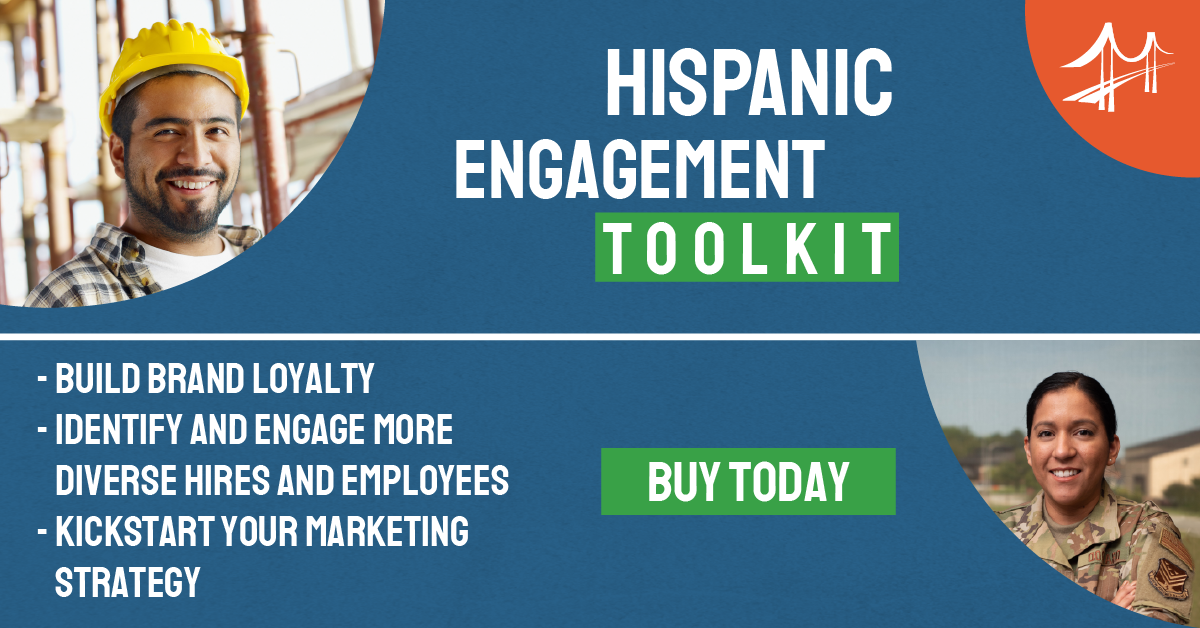The Hispanic population in the United States represents the largest ethnic minority in the nation. Their thriving demographic contributes to every facet of our everyday lives, including culture, food, economics, workforce and military across the country. Commemorative events are held every year throughout the nation during Hispanic Heritage Month, September 15th through October 15th, to acknowledge the contributions and accomplishments made by Hispanic Americans to date.
The commemorative period started as Hispanic Heritage Week under President Lyndon Johnson in 1968. Two decades later, President Ronald Reagan extended the celebration to cover a 30-day period starting on September 15th and enacted the change as a law on August 17, 1988.
Why September 15th? The 15th marks the celebration of independence for Costa Rica, El Salvador, Guatemala, Honduras and Nicaragua. Additionally, Mexico celebrates its independence on September 16, and Chile celebrates its independence on September 18.
Here are some basic facts to drive home the impact of the Hispanic segment:
-
Growing Segment– Latinos are 20% of the US population, approximately 63.7 million people. In Maryland, there are approximately 744,000 Latinos, representing approximately 12 of the population as of the 2020 Census. By 2060, 28.6% of the nation’s population will be of Hispanic origin.
-
Increasing Wealth & Financial Influence– Income levels are rising and one in four Hispanics (28%) have an individual income above $65,000. A growing number are moving into the affluent market (a 200% growth over the last decade!) – defined as adults with household incomes above $100,000. And we spend money!!! The Hispanic buying power is estimated at $1.7 trillion in 2018.
-
Language & Culture MATTER– With more than 38 million Hispanics that are spanish-dominant, plus an additional 2.6 million non-Hispanics, Spanish is by far the most spoken non-English language in the U.S. today. 68% of Latinos ages 5 and older speak English proficiently, and 71% of Latino adults say it is not necessary to speak Spanish to be considered Latino. Just consider the popularity of the Spanish smash hit, “Despacito” which holds the record for most weeks at No.1 in the U.S., longest-reigning No.1 on the Billboard Hot Latin Songs chart, and the most watched YouTube video of all time!
-
Changing Workforce– Approximately 20% of the labor force in America is of Hispanic or Latino ethnicity. As of 2021, 20% of the all Hispanic population had a bachelor’s degree or higher. 25% of students enrolled in college– both undergraduate and graduate– are Hispanic or Latino. n fact, the Bureau of Labor Statistics estimates that Hispanic Americans will account for 78% of new workers between 2020 and 2030. Did you see that number? 78%.
-
Entrepreneurial Culture– In the last decade, Hispanic entrepreneurs have consistently outpaced their non-Hispanic counterparts by initiating small businesses at a significantly higher rate of 44%, in contrast to the modest 4% growth observed among non-Hispanic entrepreneurs. These Hispanic-owned businesses play a vital role in the U.S. economy, collectively contributing over $800 billion annually. As of 2022, the nation boasts more than 5 million Hispanic-owned enterprises. Maryland, specifically, is home to approximately 100,000 Hispanic business enterprises.
Now what? Do you roll out the Chips and Salsa? The Taco Platter?
Play some Daddy Yankee or Shakira? And check off the “Hispanic Heritage Activity” box on your To-Do List?
Not quite.
Yup, Latinos are everywhere – in a significant way. My humble recommendation is to grab the proverbial toro by the horns and leverage Hispanic Heritage Month as a segway to engaging this sleeping giant. We have developed an DYI Hispanic Heritage Toolkit that can help you and your team begin to scratch the surface.
You can also get to know the attitudes, behaviors and demographics of this diverse, complex and highly segmented U.S. Hispanic marketplace, representing a hugely untapped and underserved segment. Leverage the nuances of this segment by reaching and engaging individuals with personalized messaging (in Spanish, Spanglish, or English- There’s no ONE answer!) and conversation via community outreach and media, including social media, specially Facebook.
Allow me to emphasize my subtlety: If your organization is serious about connecting and engaging Latinos as voters, donors, students, patients, employees or customers, YOU MUST allocate resources for language services and media spend to ensure engagement is sustainable and culturally resonant. With clients we often incorporate an “Influencer Model” to accelerate the relationship building process to/from the Latino community.
So, put away the sombreros, and the Google Translate app, because engaging Latinos is all about COMMUNICATION, COMMUNITY, CONSISTENCY and TRUST. Best of all, we can help!


